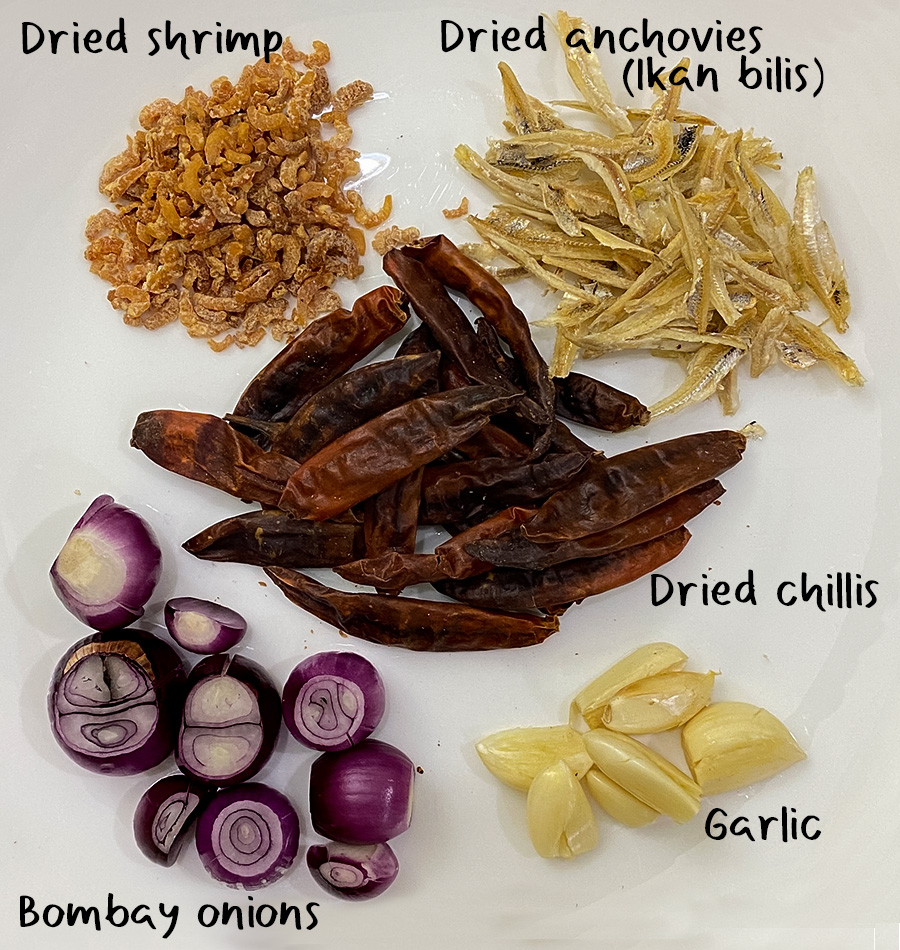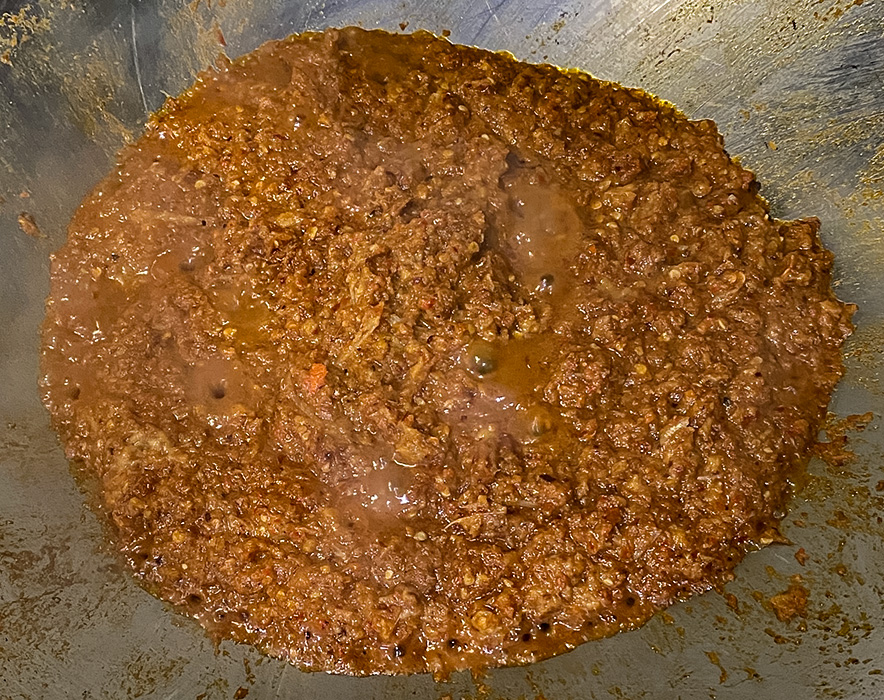|
Clem's Sambal for Nasi Lemak |
|
In Malaysia, a particular sambal is part of a popular dish known as Nasi Lemak (rice cooked with coconut milk or cream and offered with a main such as fried chicken or curry, fried anchovies and some raw or blanched vegetables - see here).
I made my first batch ever of a
sambal for nasi lemak using the a recipe I concocted after looking
up on how this relish is prepared by various online cooks. These are the
main ingredients: |
 |
|
The main ingredients for a sambal for nasi lemak
|
This is what you should end up with:
|
|
This is an oily dish and there is no getting away from the fact. Using too little oil will cause the fry to catch and burn plus the flavour profile may not develop as well. A saving grace is that if frying is done properly until the oil "splits" from the water in the ingredients, if desired, it will be possible to spoon away much of the oil. As today is Good Friday, I prepared this sambal to accompany a fried-fish based nasi lemak for dinner.
|
07 April 2023
Created by Clem Kuek

